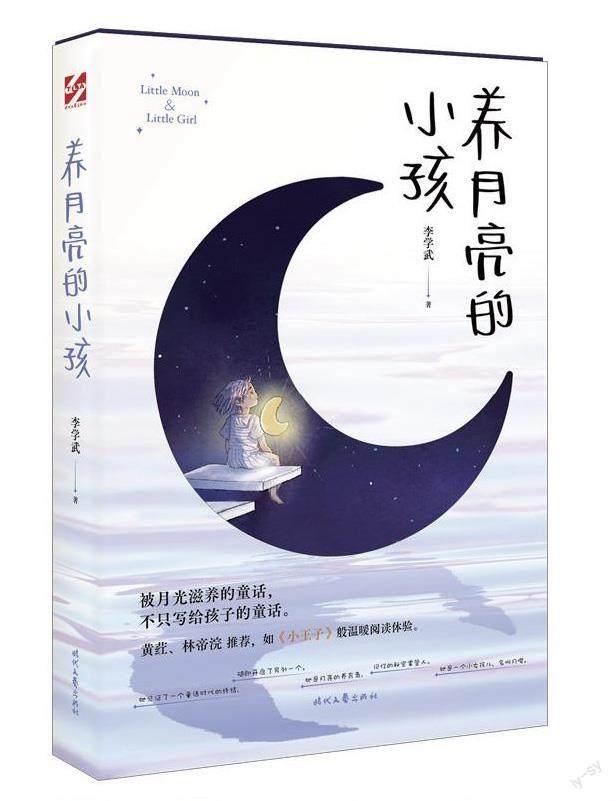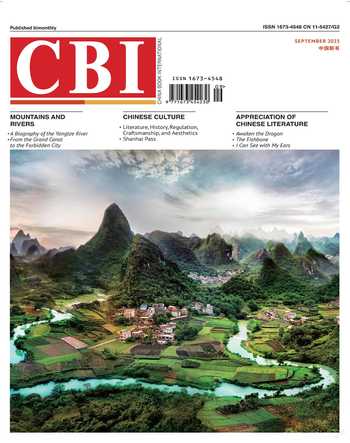The Kids Who Raised the Moon

Far, far away, there was a Moon Village. People in this village slept in the daytime and went outside at night. They lived by the moon. They wore silk woven by moonlight and used vegetables and fruits as dyes. Moonlight was their food. Yueying, a girl in the sun world, broke into Moon Village through the tie between the water and the moon. From then on, she started an imaginative and fantastic adventure. Times went on. The old moon left, and the little moon was born. Yueying was the first person she saw when the little moon was born, and she regarded Yueying as her mother.
Li Xuewu
Li Xuewu is a lecturer and Ph.D. of Chinese Language and Literature from the College of Liberal Arts at Jinan University, a professor, masters supervisor, and the dean of the School of Art of Jinan University, a writer and the dean of the Department of Film and Television, a director of Guangdong Film Association, and a director of the Literary and Artistical Critic Association of Guangdong Province.
The Kids Who Raised the Moon
Li Xuewu
Times Literature and Art Publishing House
January 2023
39.80 (CNY)
Far, far away, there was a Moon Village. People in this village slept in the daytime and went outside at night. They lived by the moon.
They were dressed in the moon. A thousand strays of full moonlight could be twisted into an ice fiber. Ten thousand ice fibers could be woven into a piece of handkerchief. A thousand vegetables and fruits were enough to dye a roll of cicada cloth — as thin as the cicadas wing. A cloth soaked with chopped purple cabbage could be made into purple cloth. If they added baking soda, the cloth would turn into lake blue. The cloth resist-dyed by turmeric would turn mint green. If they dyed the cloth with mint leaves, it would first turn green and slowly oxidize into light brown. Orange could be extracted from carrots. Beetroots, strawberries, and cherries could be mixed into dark and light red. Sophora flower buds, evening primroses, and epiphyllums were mixed into dark and light yellow.
These vegetables were used as dyes, while the moon could be eaten. In winter, the moon shone on the frozen waters surface into a thin frost layer. People scraped it off and mixed it with the juice saved since summer. It was named Vigor Frost. After having it, one would slowly lighten up and look like a big firefly. People mixed the frost with yellow peach juice to make bright fluorescent yellow and mixed it with blueberry juice to make mysterious blue. When a big yellow firefly and a big blue firefly embraced, their lights mixed into emerald-green. When spring came, the frozen river melted. Big ice blocks pushed, squeezed, and surged forwards along the river channel, like a group of white bears fighting. People drew them with hooks to the bank and buried them with Vigor Frost in the cellar. They could then be kept till summer and autumn.
Their houses were huge meteorites, with traces of melting and erosion and air marks on the surface, hollowed out in the middle, and carved into doors and windows on the sides. A small part of the villagers thought they were the remains of the old moon. The moon would die and be reborn, like the phoenix. It was unknown how many times the moon had been reborn. Most of them didnt believe it: the moon was so white, while meteorites were so dark. How could they be the same thing? Perhaps the moon defeated the black star who wanted to occupy the night sky and threw its remains down for the welfare of the people.
Moon Village was surrounded by mountains. Frozen moonlight and snow poured on the mountaintop, flowed into the woods on the mountainside, and melted into a stream. The stream circled the village, nurturing the gardens and nurseries. A path wound up and seemed to lead to the outside of the mountain. You would find the mountain top so close to the night sky when you climbed up. The snow was as white as a mirror, reflecting the shining stars and the moon. By and by, you could not tell whether you were walking on the moon or in the moonlight. You hadnt noticed where the path was twisted and that it returned to Moon Village.
Children in Moon Village also went to school. They learned to cook at the age of six. The main ingredient was nothing but moonlight. There were many cooking methods: condensation, stirring, and seasoning, all in the curriculum. At seven, children learned to make clothes: picking fibers, weaving cloth, cutting, and sewing. All clothes were the same. The moonlight could embrace mountains and rivers and shine in the corners. Anybody covered by the moonlight would look beautiful. Children would learn about grass, trees, insects and fish from eight. They would also exercise farming, sowing, harvesting and pharmacy. Their future careers must be based on what they learned at this time.
The core of Moon Village was named Moon Praise Yard. It was a large flat yard paved with stones. The busiest day was the full moon (the day when the moon is the roundest in a lunar month): moon bathing, freezing moonlight (in winter), collecting fibers, and having classes. Around the first day of a lunar month and the last day of a lunar month, there was not much moonlight. Children would dance, sing, tell stories, and run wildly with Chinese enkianthus in their hands. They also worked, such as sowing seeds that needed to sleep in the dark. Around the dam were houses and schools. The front gate faced Moon Praise Yard, and the back gate led to the outermost vegetable fields, nurseries and gardens in the village. The vegetable fields were for daily use, and the nurseries were for childrens learning. In the four big gardens was the secret kept by the whole village. They grew freely day and night throughout the year.
The village seen from the moon was covered by one circle and another, like a big rainbow lollipop. However, the colors of the rainbow were not red, orange, yellow, green, cyan, blue and purple. As the moonlight was not bright enough, everything was dark. Red turned into vermilion, orange turned into brown, yellow was swallowed, and green was vague. If you looked closely, they shone like ice crystals. Just think of it as a frosted lollipop.
In this place, birds were used for lighting. Fluorescent nightingales sang all night, but people could not hear their songs. They could only see silver rays spit out of the nightingales throats, making nights as bright as the full moon. Insects were used for debugging. They ate up dense grass, crooked buds, and uneven leaf edges and discharged fine sand manure to fertilize fields. After their life ended, the remains served as food for nightingales. Most of the time, streams peacefully flowed on the land, circling nurseries and gardens. However, after the 14th, 15th, and 16th days, it absorbed enough moonlight and became lighter than the air. Then it splashed in the air, irrigated vines, moistened canopies, and cleaned roofs thoroughly. Fishes usually have gray dorsal fins. They were buried in the water, away from naughty kids. At this time, they swam around in the air, revealing their side abdomens, usually submerged underwater. People learned they were full of colors with the glistening light of waves. It seemed as if the whole village had been tied by ribbons. Birds always wanted to compete with fish to see who was more beautiful. Usually, they would lose and be too angry to sing.
It was said that when the moon was full, one could swim along the stream to the sun world on the other side of the mountain. But no one had ever done this. There was so much work in Moon Village. Who would do the work if they left? The moon was the soul of this land. All the products of the gardens would be finally made into medicinal foam. Then, the seeds of dream maples would carry them to the sky, and they would have a bath there.

